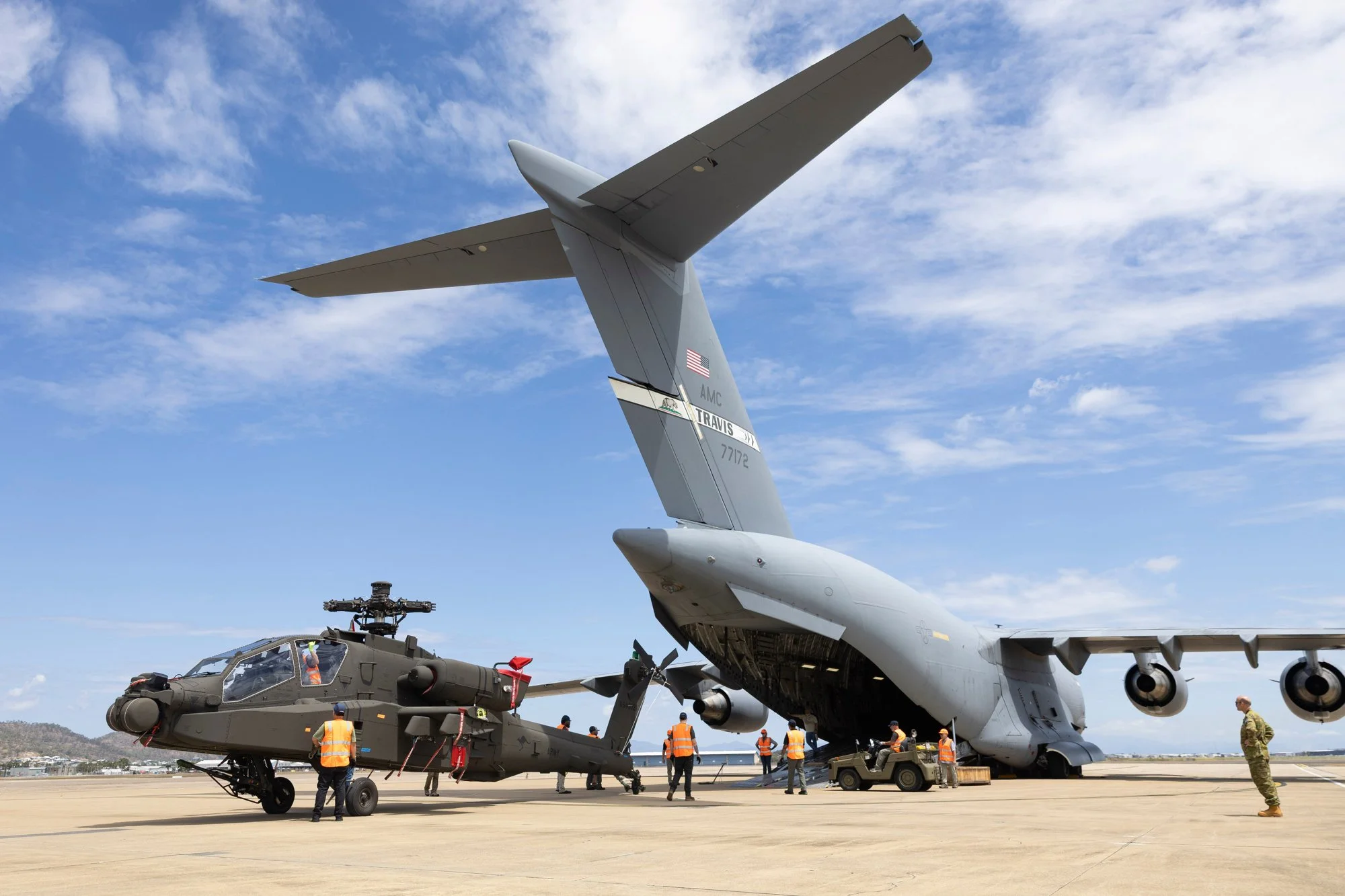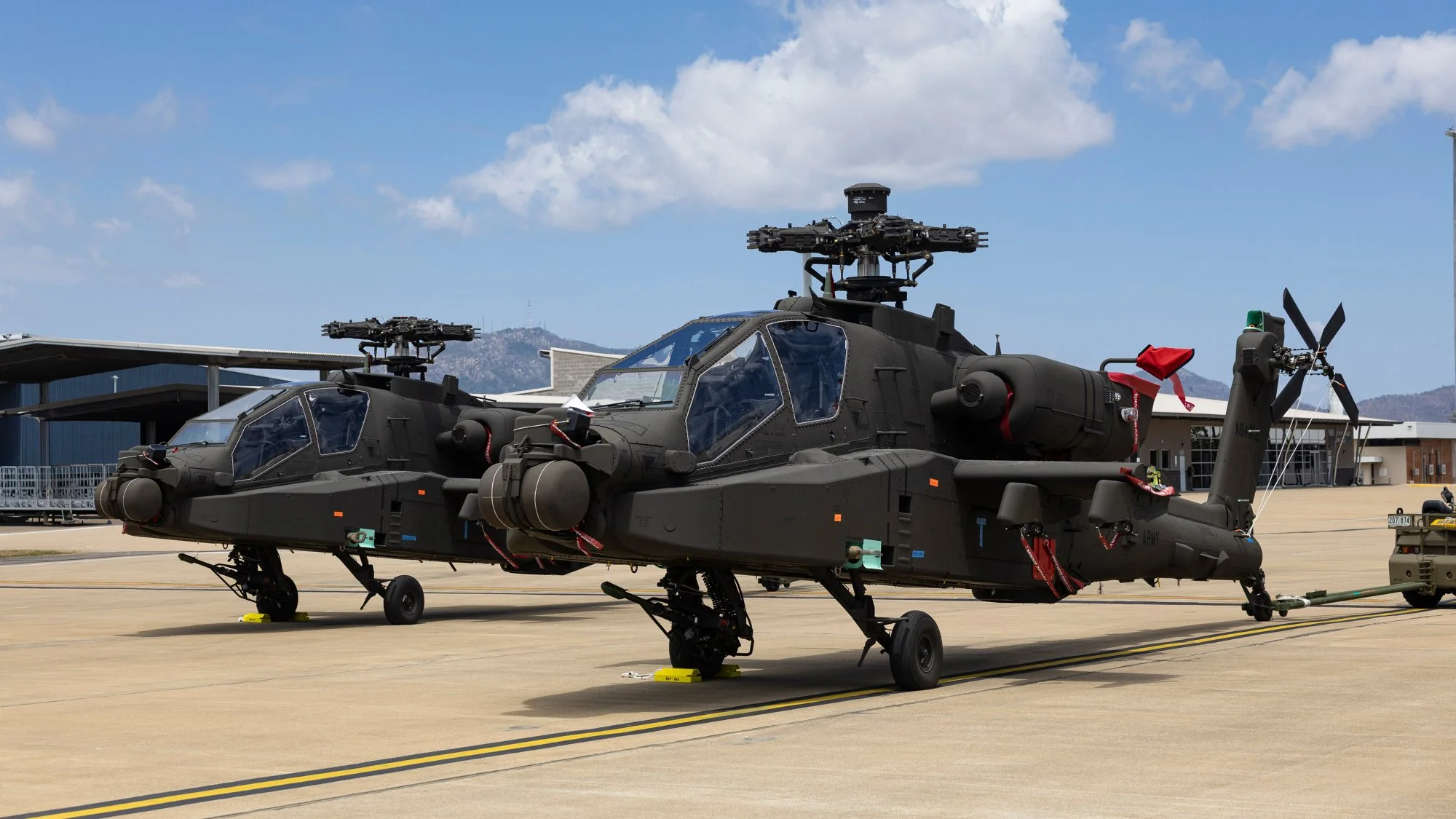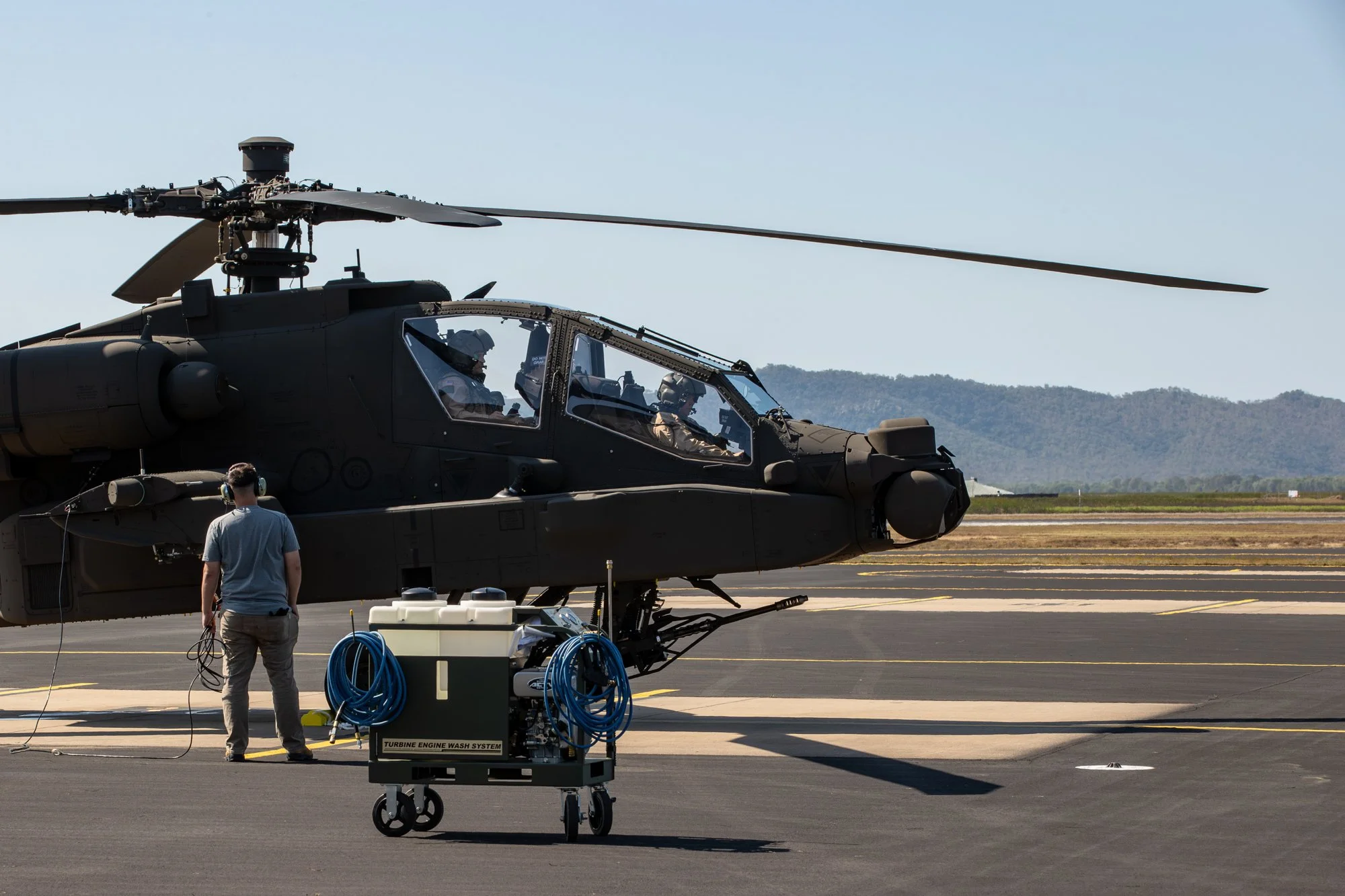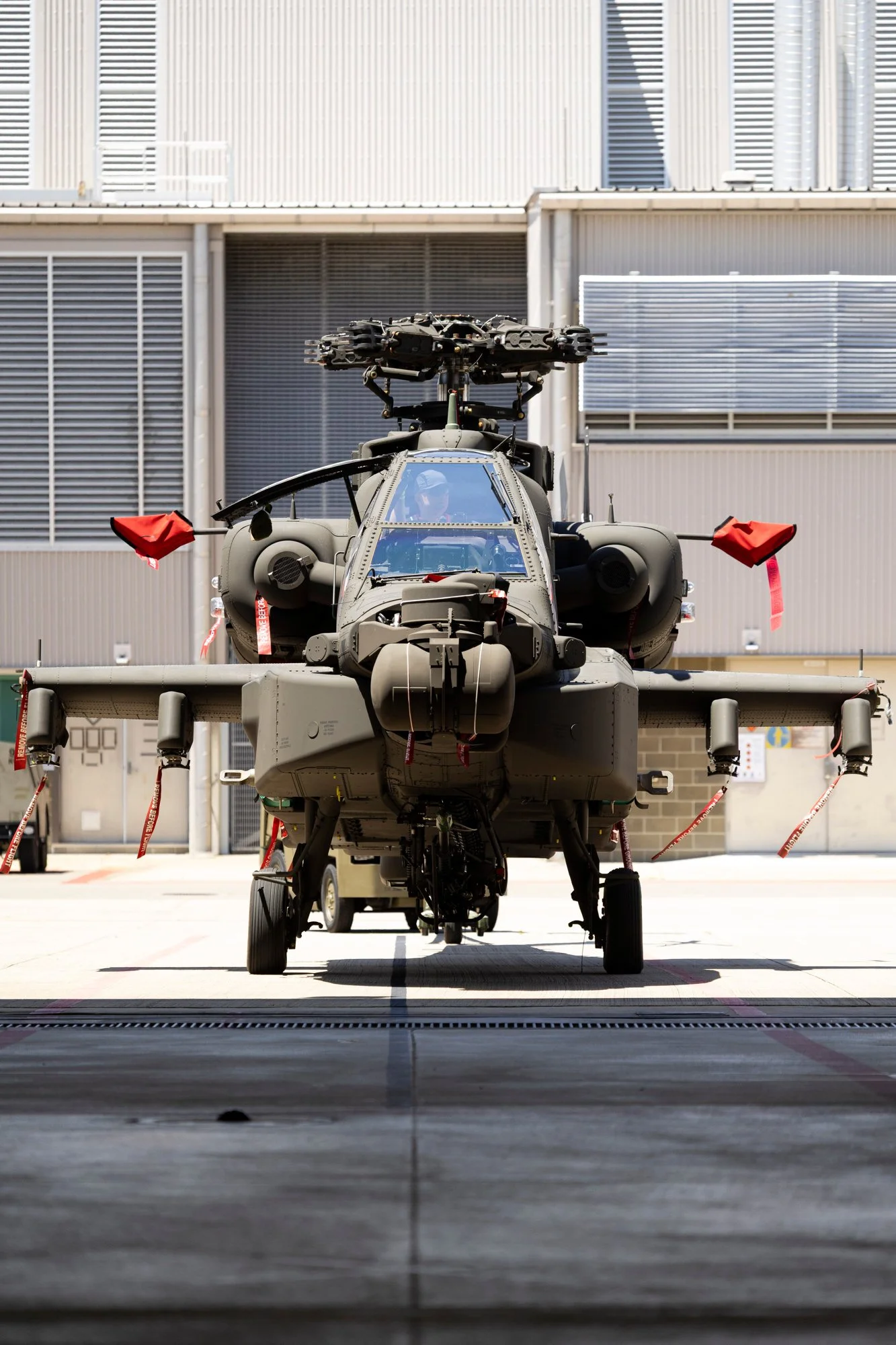Apaches Touch Down in Townsville
Article by Beau Ellis
Images by Australian Army
Australia has officially welcomed its first two Boeing AH-64E Apache attack helicopters, a moment that marks the beginning of a new chapter for the 1st Aviation Regiment in Townsville. The pair arrived in Townsville in a U.S. Airforce C-17, their rotors were removed for the journey and then reassembled before taking to the skies over North Queensland. They are the first of 29 Apache’s set to replace the ageing ARH Tiger fleet, which have long struggled with reliability and maintenance issues.
For Defence Minister Richard Marles, the Apache represents more than just a fleet renewal. He described them as “the most advanced attack helicopters operating today” capable of delivering advanced precision strike and close support that the Australian Defence Force requires. Compared to the Tiger, the AH-64E brings a host of improvements such as better sensors, greater firepower, improved networking and even the ability to team up with drones, extending the reach of pilots far beyond the helicopter’s own line of sight.
The choice of Townsville as the new Apache hub reflects a broader shift in Army aviation. RAAF Base Townsville is undergoing a $700 million upgrade to house the new fleet and the squadron’s relocation. New hangars, simulators and support facilities are already being prepared, and Boeing Defence Australia is expected to provide long term maintenance and training support, creating hundreds of local jobs in the process. For the region, the project means both an economic boost and a stronger defence presence at a time when Australia's north is seen as strategically vital.
Of course, the transition is not without its hurdles. Pilots and ground crews need to be retrained, infrastructure must be completed on time, and the Army is already planning how to integrate Apaches into amphibious operations alongside the Navy’s Canberra class ships. The Tigers will remain in service for a few more years, but by 2028 the entire fleet is due to be replaced, as Apache’s continue to arrive until 2029.
For now though, the arrival of the first two helicopters is a milestone worth celebrating. They are the first sign of a long promised capability finally taking shape. Over the next few years, these aircraft will grow from a pair of newcomers in Townsville to the backbone of one of the most advanced attack helicopter forces in the Indo-Pacific. In many ways, their arrival signals not just the end of the Tiger era, but the beginning of a more reliable, more lethal and more connected future for Australian Army.






